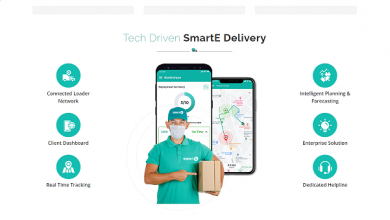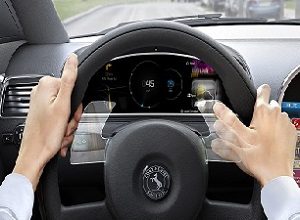Bringing Static Vehicle Build and Dynamic Driving Behaviour Data into Insurance

Andrew Ballard, LexisNexis Risk Solutions
Anyone fortunate to drive a new or relatively new car will appreciate how, over the past two decades, there has been significant investment by car manufacturers around the globe into making their vehicles safer, easier and more pleasurable to drive. Where once slowing down and bringing the vehicle to a stop relied purely on the actions of the driver, now, over 70% of new cars in the UK for example, have Automatic Emergency Braking (AEB) as standard and over 83% have a self-activating system.
As a consequence of this continued investment by car manufacturers, driver assistance technology, together with the driving data generated and recorded by cars through imbedded connectivity, has been on a massive growth trajectory.
All cars are expected to have advanced levels of connectivity by 2030, generating, receiving and sharing a wide range of data into eco-systems including the car manufacturers to help them better serve their customers and support their goals of zero emissions and zero fatalities. Worldwide sales of connected cars with embedded telematics are already estimated to have hit 28.5 million units in 2019 and Europe is slated to be the market with the largest connected car parc globally in 2023. Furthermore, in the 5-year period between 2015 and 2020, the global Advanced Driver Assistance Systems (ADAS) market doubled in size and is expected to reach nearly 32 billion U.S. dollars by 2023.
Although one of the prime focus areas today for car manufacturers is reducing emissions by electrification, the OEMs also need to lower the cost of ownership for their customers and engender brand loyalty in this highly competitive market. Maximising the value of vehicle data to help drive ongoing developments in ADAS would be an added bonus if pursued in the future.
Building connections between car manufacturers and insurers
Vehicle insurance cover is an essential element within the cost of ownership. Car manufacturers have therefore been looking for ways to create connections with insurance providers to help their customers access competitive insurance premiums and cover that truly reflects the investment they have made in their car’s in-built safety features – whether they come as standard or as selected additional options at the point of purchase. They also want to ensure their customers are given the choice to access more personalised insurance products and services, such as usage-based insurance (UBI) or pay as you drive (PAYD), based on driving behaviour data from their car’s imbedded connectivity.
Historically, the use of telematics for insurance has been dominated by aftermarket devices or ‘black-boxes’. With in-built capability, the connected car data has the potential to go more mainstream and assist with additional use cases.
The continuing advances in ADAS and the growth of connected vehicles provides a rich stream of static and real-time driving data that can offer a fair basis for pricing motor desired by consumers compared to current estimates used by the insurance sector for calculating risk. Traditional rating factors used in motor insurance underwriting can be complemented to hone further in on risk as more vehicle data starts to come into the insurance eco-system.
But first, the capability needs to be built to make vehicle centric data accessible and usable for insurance.
Bringing ADAS data into insurance rating
Starting with ADAS, insurance providers need to understand the impact of these valuable and effective systems on claims frequency and severity to help calculate pricing relative to the predictive loss cost. For car manufacturers, there is also huge value in understanding the link between in-car safety features and insurance claims for vehicle-level benchmarking and to understand ADAS system efficacy. This insight could also give car makers the ability to showcase to customers the true safety impact of purchasing vehicles equipped with these features as part of their marketing activity, which could also be very powerful when a customer is deciding whether to invest in the technology.
The problem for the insurance market is that deciphering the precise specification on a new vehicle is very complex with a variety of standard and optional features that will include ADAS. Also, ADAS features tend to be described very differently from one car manufacturer to another to differentiate themselves from their competitors. An additional consideration or complication is the availability of ‘packs’. This is where the OEM will group together a number of safety features and offer this as an equipment pack with its own name. The content of the ‘pack’ may also differ over time based on consumer demand and competitor benchmarking.
To help solve this issue, an ADAS classification system has been created using machine learning to scan millions of lines of car manufacturer vehicle data to logically sequence and classify vehicle safety features and the component’s intended operation or purpose.
European motor manufacturers are now starting to share ADAS data, and testing is well underway to build intelligence around how ADAS fitments relate to claims with motor insurance providers in the UK and Europe. At this stage, over two-and-a half million vehicles have been assessed across four European countries.
The LexisNexis ADAS Classification currently system consists of approximately 60 separate features. In depth analysis has identified certain features as being “core” in terms of helping to reduce claims frequency. That said, all ADAS features will have the ability to assist the driver and often this can reduce overall driving effort and fatigue – thus contributing toward safer driving.
Access to vehicle safety data will help insurance providers factor for their presence throughout the customer journey and establish the differences in risk profile associated with the vehicles that have these safety features. It means that for the first time, confirmation of the safety features of a car, along with how well they perform will be accessible to insurance providers at a Vehicle Identification Number level for insurance quotes and renewals.
Connected cars – solving the ‘many to many’
In addition to the ‘static’ vehicle build information, dynamic driving behaviour data from a connected car goes much further, and even holds the potential to confirm if an ADAS feature is enabled and if it has been activated.
Consumers see tremendous value in vehicle connectivity, with McKinsey’s 2020 consumer survey on autonomous driving, connectivity, electrification, and shared mobility (ACES) revealing that 37 percent of respondents would switch car brands to achieve improvements in this area. The survey also found that 39 percent of consumers were interested in unlocking additional digital features after purchasing a vehicle—a figure that rises to 47 percent for customers of premium OEMs.
Driving behaviour data from connected cars can be fed into the insurance market, with the customer’s consent, for use in insurance pricing so that consumers have the choice of accessing more accurate, appropriate and personalised insurance coverage (UBI), based on their own individual driving behaviour.
To make this work, you need to connect many car makers to many insurance providers for many vehicles and their drivers. One-to-one connections aren’t efficient. At the same time, there will be data flowing from millions of vehicles which will need consumer permissions to share with the insurance market. The data will need to be standardised so that consumers are priced for insurance consistently regardless of the vehicle make or model they are driving.
Connected car data exchange
The formation of connected car data exchanges with participation from a growing number of car manufacturers in the US and Europe, is helping to solve this ‘many to many’ challenge. It enables driving behaviour data from motor manufacturers to be brought to insurance providers through one data exchange in a fully compliant, normalised, contextualised and standardised manner. The ultimate goal is to deliver this back as an actuarial grade driving score for UBI, regardless of the vehicle make, model or device type.
This approach removes much of the complexity, cost and compliance issues car manufacturers could otherwise face delivering insurance benefits from the connected car. We estimate that without a data exchange, building the connections it needs with the insurance market could cost car manufacturers upwards of $4bn. It also helps pave the way for subscription, pay per use, pay per mile and other mobility models of the future.
Creating consumer trust
Clearly customer trust and education must be at front and centre in defining when and how connected car data is shared with insurance providers. There are already multiple ways to obtain consumer consent to share and use connected car data – both OEM-led and insurance provider-led processes can be effective.
Looking more broadly, the European Union has initiated several funded projects designed to increase consumer confidence in the use of personal data generated by internet connected devices including connected car data. The smashHit consortium is one of these projects. This consortium has been tasked with creating a secure platform that will increase consumer trust and confidence in personal connected car data sharing for specific use cases. Utilising its experience supporting the insurance and car manufacturing markets in Europe and working closely with Volkswagen Group, LexisNexis Risk Solutions will focus on consumer consent for UBI insurance propositions, using insight derived from connected car data.
The growth of connected car data
Fundamentally, making vehicle centric data ‘work’ for the good of the customer, car maker and insurance provider will be reliant on a central data exchange connecting these two industries, where data can be normalised and managed in a fully compliant way. This will make the huge volume of connected car data meaningful and useable for insurance and other services.
During 2021, we will see the evolution in ADAS features that have over-the-air update capabilities, giving the consumer greater flexibility and control – sometimes referred to as “Feature-on-demand”. Many OEM’s including several from the Volkswagen Group are building vehicles with ADAS Capable features such as LED Matrix Headlamp units that the customer can upgrade to become ‘adaptive’.
These kinds of over-the-air updates provide another reason why consumers are likely to want to have their vehicle ’connected’. It will give car manufacturers an opportunity to monetise the investment they have ploughed into connected car technology while allowing insurance providers to develop new propositions based on vehicle data or driving behaviour data.
A future in which an individual has the choice to be insured based on their car’s ADAS data as well as how well and how far they drive is now within reach.
Author:

Andrew Ballard
Senior Global Product Manager
LexisNexis Risk Solutions
Andrew Ballard joined LexisNexis Risk Solutions in March 2019 as Senior Global Product Manager. He serves within the company’s Global Product team helping to evaluate, test and build next-generation data services for the automotive industry and the insurance continuum, from the point of outreach to the point of claims, responding to the evolving client and market needs for more insight on the vehicle.




